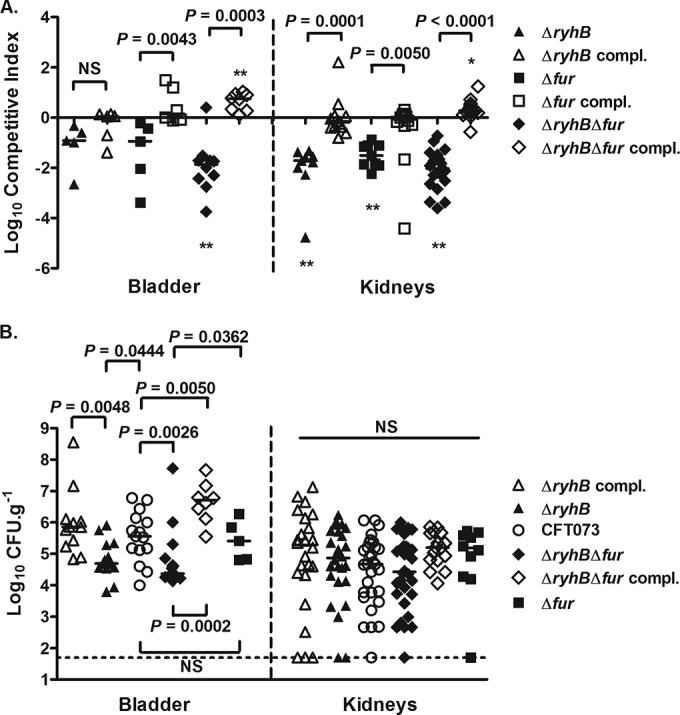FIG 1.

Roles of RyhB and Fur in colonization of the mouse urinary tract. (A) CBA/J mice were coinfected either with a 1:1 ratio of CFT073 ΔlacZYA and one of the mutant or complemented strains (ΔryhB, Δfur, ΔryhB Δfur, ΔryhB compl., or Δfur compl.) or with a 1:1 ratio of the wild-type CFT073 strain and the ΔryhB Δfur complemented strain (with both ryhB and fur). Bladders and kidneys were aseptically removed at 48 h p.i. The proportion of each strain was monitored, and results are represented as log10 competitive indexes (CI). The CI represent the relative numbers of the two tested strains from the tissues sampled compared to the initial numbers of the strains in the inoculum. Negative CI values indicate a decreased capacity of the mutant or complemented strain to compete with the reference strain (CFT073 or CFT073 ΔlacZYA). Horizontal bars indicate the mean log10 CI values. (B) CBA/J mice were infected with either CFT073 or one of its mutant (ΔryhB, Δfur, or ΔryhB Δfur) or complemented (ΔryhB compl. or ΔryhB Δfur compl.) strains. Bladders and kidneys were aseptically removed at 48 h p.i. Results are presented as log10 CFU g−1. Each data point represents a sample from an individual mouse, and horizontal bars indicate the median values. Each kidney was sampled separately. The dashed line represents the limit of detection of bacterial numbers. Statistically significant differences in CI were determined by the Wilcoxon matched-pair test (*, P < 0.05; **, P < 0.005). The Mann-Whitney test was used to determine statistical differences between CI values and to determine the statistical differences in single-strain infection experiments. NS, not significant.
